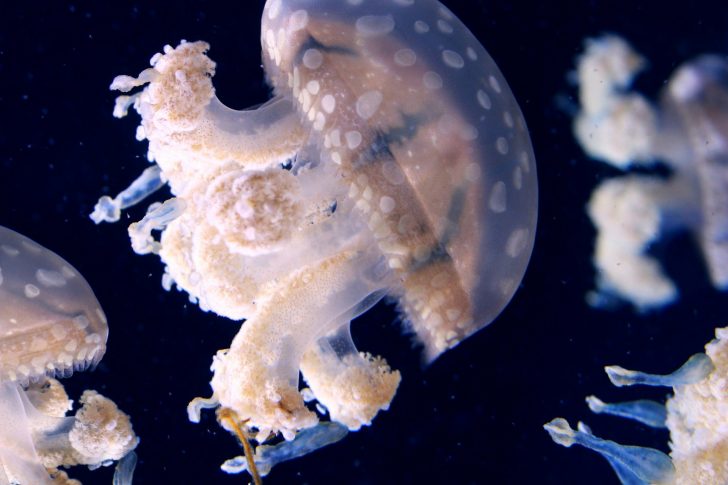Jellyfish have always been masters of the deep, gliding through water with little effort. Now, researchers are turning them into powerful tools for exploring the Pacific Ocean. At Caltech, engineers and marine biologists have teamed up to create cyborg jellyfish that could change how we study the sea.
At first glance, these creatures look like ordinary moon jellyfish. Their soft bells pulse as they drift in gentle currents. But if you look closer, you will see orange plastic, thin wires, and a new kind of movement that is too purposeful to be natural.
Researchers have fitted these live jellyfish with tiny electronic controllers. These chips send gentle electric pulses that sync with their natural rhythm, tripling their speed without using much more energy. They also added a 3D-printed forebody that cuts drag and improves their vertical swim, helping them reach deeper layers faster.
Sensors and Low-Cost Innovation
These cyborg jellyfish carry sensors that measure temperature, oxygen levels, salinity, and even plastic pollution. Each one costs about twenty dollars, which is a fraction of the price of traditional research gear. This makes it possible to deploy large swarms, gathering data across huge stretches of the Pacific.

Francis / Unsplash / Unlike loud robotic subs, these modified jellyfish move quietly. They blend into reefs and hydrothermal vents without disturbing wildlife.
Since jellyfish lack a central nervous system and pain receptors, researchers face fewer ethical issues. Studies show that they show no stress while swimming under electronic control.
The team is working on biodegradable parts to make sure the ocean stays clean. Current models excel at moving up and down, but horizontal navigation is still a challenge. Engineers hope to soon guide them across rough seafloor terrain and tricky currents.
Plans are underway to build versions that can handle crushing pressures in trenches more than four thousand meters deep. This would open a new window into the Pacific’s most hidden places, where almost no one has ever gathered data.
However, the big hurdle now is real-time communication. While these jellyfish can collect data, sending it back instantly is tough. Researchers are experimenting with wireless links and relay stations to make live updates possible.
Most trials so far have been in controlled tanks, but ocean tests are coming soon. Scientists are eager to release sensor-equipped jellyfish into open waters and see what secrets they bring back.

Brittany / Unsplash / “Our goal is to make ocean exploration open to everyone,” says John Dabiri from Caltech. A single lab can now launch an entire fleet without a massive budget, pushing marine research into a new era.
“The best control signals follow the jellyfish’s own natural beat,” explains Dai Owaki from Tohoku University. His team uses AI to learn their swimming patterns, making each movement smoother and more efficient.
It is essential to note here that tiny cyborg jellyfish are not just a cool experiment. They could be the key to understanding climate change, marine ecosystems, and pollution at a scale we have never seen before. Watching these soft, glowing robots drift through the Pacific feels like catching a glimpse of the future.